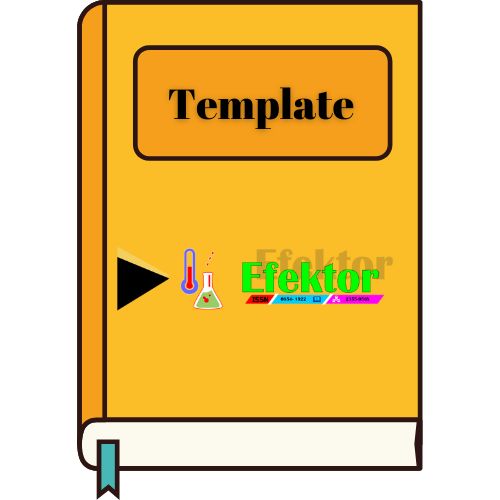Needs Analysis for the Development of Electronic-Based Chemistry Teaching Materials Integrated with Problem-Based Learning Model for High School Students in Class X Medan City
DOI:
https://doi.org/10.29407/e.v11i1.21594Keywords:
Teaching Materials, Chemistry, Electronics, Technology.Abstract
This study aims to fulfill the requirement for improving chemistry instruction materials for SMA classes, and the study's findings will be consulted for further information in the development of electronic chemistry teaching materials. A qualitative descriptive method was employed in the study. Four secondary schools participated in this study in Medan City by interviewing four teachers from each school and observing the IPA-X class with 80 students. It has been done. As the Study shows, teachers still use traditional teaching methods and only use school-published textbooks. The teaching materials must be revised, as students still use electronic media in 48.9% of the survey results. I found that they made use of the training materials provided. The required percentage is 53.6%. These results demonstrate the need to develop electronic materials that help students comprehend the subject matter and facilitate learning and exploring the learning process.
References
Abdussamad, Z. (2020). Metode Penelitian Kualitatif (Vol. 21, Issue 1). Syakir Media Press. http://journal.um-surabaya.ac.id/index.php/JKM/article/view/2203
Farisi, A., Hamid, A., & Melvina. (2017). Pengaruh Model Pembelajaran Problem Based Learning Terhadap Kemampuan Berpikir Kritis Dalam Meningkatkan Hasil Belajar Siswa Pada Konsep Suhu Dan Kalor. Jurnal Ilmiah Mahasiswa (JIM) Pendidikan Fisika, 2(3), 283–287.
Goode, E., Nieuwoudt, J., & Roche, T. (2022). Does online engagement matter? The impact of interactive learning modules and synchronous class attendance on student achievement in an immersive delivery model. Australasian Journal of Educational Technology, 38(4), 76–94. https://doi.org/10.14742/ajet.7929
Hutahaean, L. A., Siswandari, & Harini. (2019). Pemanfaatan E-Module Iteraktif Sebagai Media Pembelajaran di Era Digital. Prosiding Seminar Nasional Teknologi Pendidikan Pascasarjana UNIMED, 1(2018), 298–305. http://digilib.unimed.ac.id/id/eprint/38744
Jannah, M., & Wibowo, F. C. (2022). Pengembangan E-Modul Berbasis Problem Based learning ( PBL ) Materi Momentum , Impuls dan Tumbukan. Jurnal Lontar Physics Today, 1(2), 87–96. https://doi.org/10.26877/lpt.v1i2.11160
Ningsih, I. S., & Fuadiah, N. F. (2022). Pengembangan E-modul Berbasis Problem Based Learning ( PBL ) Pada Materi Persegi Panjang Untuk Siswa SMP. 10(2), 285–294. https://doi.org/10.25273/jems.v10i2.11804
Rahmadani. (2019). METODE PENERAPAN MODEL PEMBELAJARAN PROBLEM BASED LEARNING (PBL). Lantanida Journal, 7(1), 75–86.
Sitepu, P., & Pulungan, A. N. (2021). Pengembangan Modul Elektronik Terintegrasi Problem Based Learning (PBL) Pada Materi Larutan Elektrolit dan Non Elektrolit. Jurnal Inovasi Pembelajaran Kimia, 3(2), 201. https://doi.org/10.24114/jipk.v3i2.27076
Wasonowati, R. R. T., Redjeki, T., & Ariani, S. (2014). Penerapan Model Problem Based Learning (Pbl) Pada Pembelajaran Hukum - Hukum Dasar Kimia Ditinjau Dari Aktivitas Dan Hasil Belajar Siswa Kelas X IPA SMA Negeri 2 Surakarta Tahun Pelajaran 2013/2014. Jurnal Pendidikan Kimia, 3(3), 66–75.
Downloads
Published
Issue
Section
License
Authors who publish with this journal agree to the following terms:
- Copyright on any article is retained by the author(s).
- The author grants the journal, the right of first publication with the work simultaneously licensed under a Creative Commons Attribution License that allows others to share the work with an acknowledgment of the work’s authorship and initial publication in this journal.
- Authors are able to enter into separate, additional contractual arrangements for the non-exclusive distribution of the journal’s published version of the work (e.g., post it to an institutional repository or publish it in a book), with an acknowledgment of its initial publication in this journal.
- Authors are permitted and encouraged to post their work online (e.g., in institutional repositories or on their website) prior to and during the submission process, as it can lead to productive exchanges, as well as earlier and greater citation of published work.
- The article and any associated published material is distributed under the Creative Commons Attribution-ShareAlike 4.0 International License













